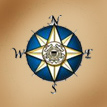


 |
 |  |  |  |  |  |

| Travel Photography |
| If you are like me, enjoy travelling, every time you go somewhere you think what should I bring with me? The nagging feeling that I need to take this lens and that lens because there is going to be this unique opportunity does not stop. Basically, you need to decide if you are going to enjoy your trip or not. If photography is your main aim, then, of course, go ahead and take a truck-load of equipment! However, if you think that travelling light is going to help you to enjoy the trip more then, by all means, take a more critical look at what you are going to take with you. I usually ask myself the following questions. Is it going to be primarily in the urban area or rural area? Am I going to photograph people or landscapes or both? You will be amazed to see how these simple questions allow you to cut down on the equipment you need to carry! I usually find that a wide-angle lens is the must for landscapes and architecture photography, especially in tight spaces. Short telephoto lenses are good for portraits and performances. They usually are of high speed: aperture ranging from f1.8 to f2.8. So if a tango show is on the menu or a street carnival then 85 to 105mm is my preferred choice. However, if you have planned street portraits, then a long telephoto: 200mm+ is advantageous as it allows you to take pictures without people noticing you. Yes, I know, it might be rude at times. Asking for permission is preferable and sometimes works wonders. And, of course, if people wave hands in front of their faces then do no take a picture of them. Long telephoto means you do not stick a camera right in their face, making them more relaxed and comfortable. Unless you are shooting wildlife, you can get away with 200mm as your longest telephoto. For wildlife, and especially birds, you will need 400mm+. You can say, I can always crop the image. However, the cropped picture often is not as sharp as if it was taken with the right lens. Some people chose to use zooms while travelling saving them time on changing lenses. That is ok as long as you shoot outdoors. Common (consumer) zooms are notoriously bad indoors, having apertures usually between 3.5 and 5.6. Not only does it increase your chances of getting blurry pictures, it also makes the auto-focus work slower thus missing on opportunities. A good fixed lens of max aperture of f1.8 will be very effective indoors. Lens with maximum aperture of f2.8 would be my 2nd choice. |
| Parties |
| This type of event is usually held indoors with lots of people crammed in. Kids are running around and lots of noises are heard. Not a good time to keep changing lenses. Decide what you want to shoot before hand. Kids' portraits? Then a short telephoto like 85mm will give you good working distance so you are not in their way and also helps to speed up auto-focus with its f1.4 or f1.8 aperture. Note, that the auto-focus is done at a maximum aperture and then the shot is taken at the actual pre-selected aperture. If you plan to take shots of groups of people then 35mm or wider will be helpful. From a few meters away you will be able to take a group photo of a few people. Don't, however, come too close, as the distortions will become obvious and unpleasant. A flash with the attached light softener/diffuser will help to get crispy and contrasty pictures. Using zooms, as I have mentioned in the 'Travel Photography' section seems convenient but will not produce the best results. Something like 17-55 f2.8 or 28-70mm f2.8 will be the best choice amongst Nikon zooms if you can afford it. Tamron has 17-50 f2.8 lens which will do fine as well for the budget-conscious. |
| Sporting events and open spaces |
| If you have an outdoor or an indoor event where you cannot get close to your subject, your best choice would be to use at least 180mm lens. The 80-200mm f2.8 zoom would generally be good, or 70-200 f2.8 VR if you can afford it. You will find that it allows to get action shots nicely! If the distance to the subject is great, using 1.4x teleconverter will help to bring the action closer. The teleconverter will slightly affect the shutter speed and the auto-focus speed due to the loss of 1 stop. Of course if you are in a sports action photography then 'the bigger the better applies', meaning that heavy 300mm or longer lens with the fast maximum apertures of f2.8 will do the trick. A monopod is a must as it is hard to hold such a heavy lens steadily in your hands especially for the prolonged periods of time. Shooting indoors is much trickier as the amount of light is usually limited. A good external flash is often needed to compensate for that. However, you will notice that the camera reacts much slower with the flash on. So use it sparingly if shooting action. |